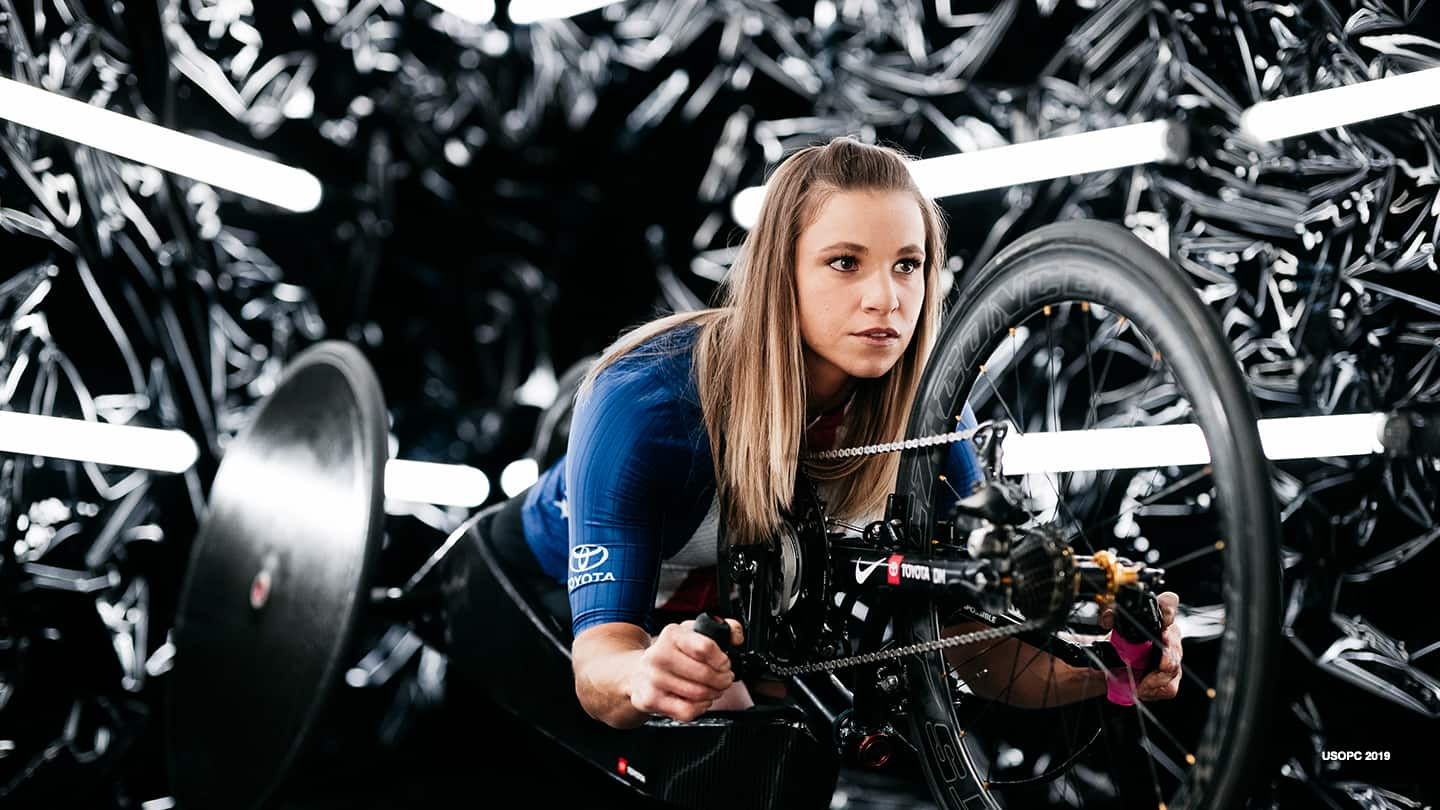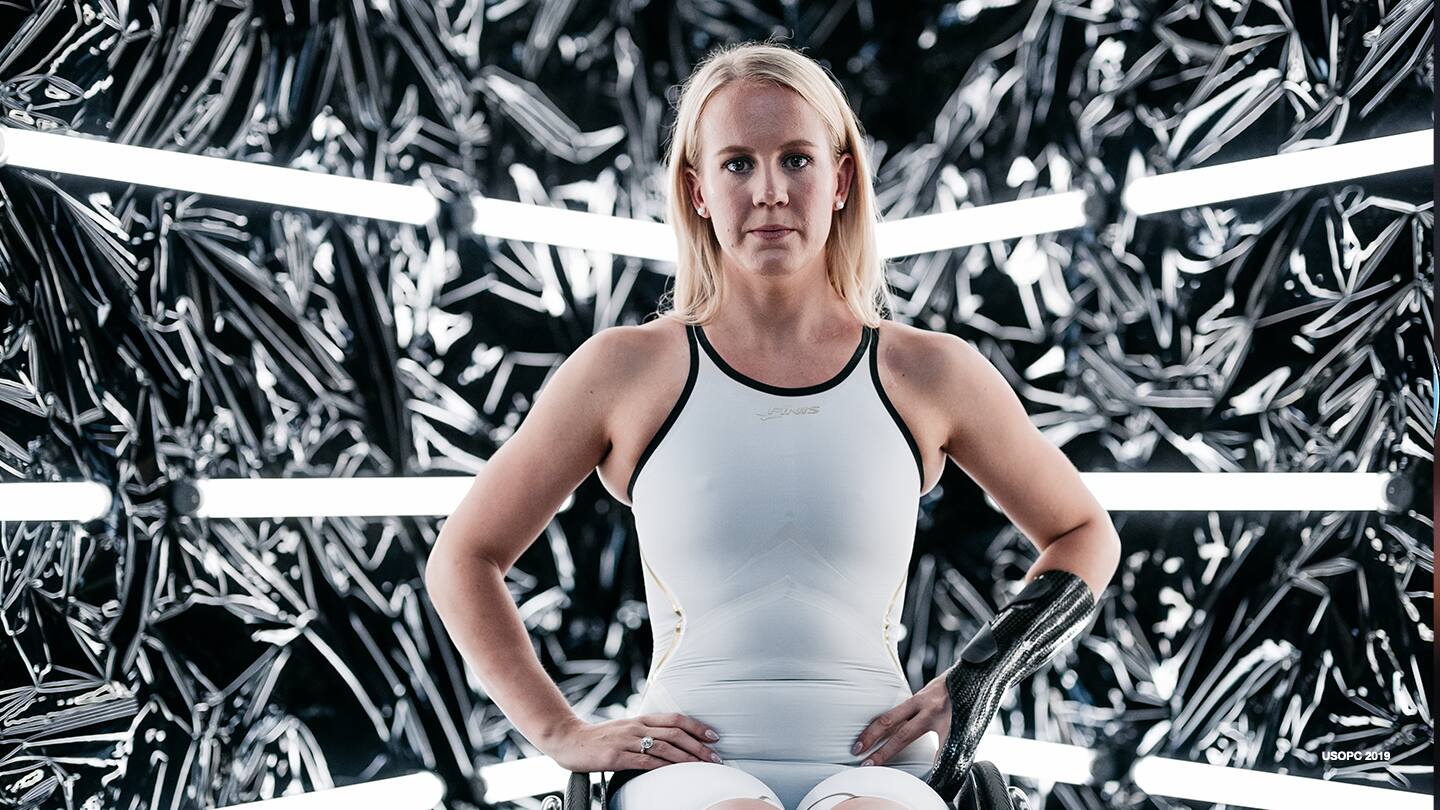
Para Sport 101: Explaining The Classifications For Cycling, Swimming And Track & Field
by Marc Lancaster
We have weight classes in sports like boxing, wrestling and weightlifting, and separate competitions for juniors or specific age groups in tennis, golf and cycling.
Para sports are no different, but the classification process that determines who competes against who can be complicated, controversial and confusing. The International Paralympic Committee sums up classification as grouping athletes “by the degree of activity limitation resulting from the impairment.”
Impairments are generally broken down into three groups — physical impairments, vision impairment and intellectual impairment — and eligibility varies based on the sport. Athletes are assessed by experts to determine their classification. Generally speaking, the lower the classification number within each group, the greater the level of impairment.
With the U.S. Paralympic Team Trials in Cycling, Swimming and Track & Field set to start June 17 in Minneapolis, we break down the different classifications in which athletes will compete.

Oksana Masters poses during the Team USA Tokyo 2020 Olympic shoot on November 23, 2019 in West Hollywood, California.
B – For visually impaired athletes who compete on tandem bikes with a sighted rider known as a pilot in front.
H 1-5 – For competitors who have paralysis or lower-limb amputation who ride handcycles. Athletes in H1-4 have no leg function but varying degrees of arm and trunk function and must ride in a reclining position. Those in H5 compete in a kneeling position. Will Groulx (H2) took gold in the Rio 2016 road race and silver in the time trial after winning medals in wheelchair rugby in each of the three previous Paralympics.
C 1-5 – For athletes who ride a standard bicycle, sometimes with adaptations. C1 competitors have the most significant physical limitations, with increasing function up to C5. Shawn Morelli (C4) won gold in the time trial and the track individual pursuit in Rio.
T 1-2 – These competitors ride tricycles because of balance or movement impairments that prevent them from being able ride bicycles.

Mallory Weggmann poses during the Team USA Tokyo 2020 Olympic shoot on November 23, 2019 in West Hollywood, California.
The “S” prefix is used for freestyle, butterfly and backstroke events, while the “SB” prefix is for breaststroke and “SM” for individual medley races.
There are 10 classifications in the “S” group and nine in “SB”, so most competitors who swim breaststroke and at least one of the other three strokes will have multiple designations. For example, Jessica Long, who has won 23 Paralympic medals — 13 of them gold — is classified S8/SB7/SM8.
S 1-4 and SB 1-3 – These swimmers have the most severe impairments, and their individual medleys consist of three different strokes rather than four.
S5/SB4 and S6/SB5 – These classifications include swimmers of short stature, those with amputation of both arms and those with control or coordination issues on one side of the body. Roy Perkins (S5) has 11 medals from the last three Paralympics, including gold in the 50-meter butterfly in Beijing and Rio.
S7/SB6 – For athletes with one leg and one arm amputation on opposite sides; paralysis of an arm and a leg on the same side; or full function in arms and trunk and some leg function. McKenzie Coan (S7) won gold in the 50-, 100- and 400-meter freestyle in Rio.
S8/SB7 – For swimmers who have an amputation of one arm or significant restrictions with lower-body joints.
S9/SB8 – These competitors have double below-the-knee amputations or joint restrictions in one leg. Michelle Konkoly won gold in the 50- and 100-meter freestyle in Rio, plus two more medals in the relays.
S10/SB9 – These swimmers have minimal physical impairments, such as the loss of a hand.
S/SB 11-13 – For competitors with visual impairments, with 11 the most impaired and 13 the least. S11 athletes must use blacked-out goggles and have someone using a long pole tap them when they near the end of a lane. Brad Snyder (S11) has five gold medals and two silver from London and Rio.
S/SB 14 – For athletes with an intellectual impairment.

David Brown and Jerome Avery pose during the Team USA Tokyo 2020 Olympic shoot on November 23, 2019 in West Hollywood, California.
Track and jumping events have a “T” prefix before the classification, while field events have an “F” prefix.
T/F 11-13 – These classifications are for visually impaired athletes, with 11 the most impaired and 13 the least. T/F11 athletes wear eyeshades while competing to ensure no one has an advantage. Four-time Paralympic long jump silver medalist Lex Gillette competes in the T11 class.
T/F 20 – For athletes with intellectual impairment that affects “conceptual, social and practical adaptive skills required for everyday life.” Mikey Brannigan, who was diagnosed with autism at age 3, won gold in the T20 1,500 meters in Rio.
T/F 31-34 – For athletes with impaired coordination, often due to traumatic brain injury or cerebral palsy. These athletes competed while seated, usually in a wheelchair.
T/F 35-38 – Same as above, except these athletes compete while standing.
T/F 40-41 – For athletes with short stature.
T/F 42-44 – For athletes with leg deficiency, leg length difference or impaired muscle power or range of movement in the legs. Hunter Woodhall (T44) won silver in the 200-meter and bronze in the 400 in Rio.
T/F 45-47 – For athletes with arm deficiency or impaired muscle power or range of movement in arms. Roderick Townsend (T46) won gold in the long jump and high jump in Rio.
T/F 51-54 – These athletes compete in wheelchairs. Those in T51 and T52 have limitations to their legs and arms, while T53 competitors have fully functioning arms but limitations with their trunk. Those in T54 have more trunk function and possibly some leg function. Tatyana McFadden (T54) has won 16 Paralympic track medals, including seven golds, and has won the Boston, New York, Chicago and London marathons multiple times.
F 55-57 – In these throwing-event classifications, F55 competitors have no leg function, while F56 have partial function and F57 the most function.
Marc Lancaster #
Marc Lancaster is a writer and editor based in Charlotte. He is a freelance contributor to TeamUSA.org on behalf of Red Line Editorial, Inc.